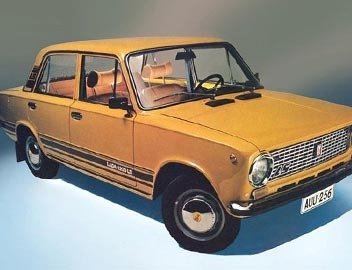
Russian Automotive Industry: Overview, History, and Future Prospects
Introduction:
The Russian automotive industry has a rich history and plays a significant role in the country's economy. In this article, we will provide an overview of the Russian automotive industry, its historical development, major players, and future prospects.
-
Historical Background:
The Russian automotive industry traces its roots back to the early 20th century when the first automobile manufacturing plants were established. However, due to various historical events, such as World War II and the Soviet era, the industry faced challenges and underwent significant transformations. -
Major Players:
The Russian automotive industry is characterized by both domestic and foreign manufacturers. AvtoVAZ, the largest domestic automaker, is well-known for producing the iconic Lada brand. Other prominent domestic manufacturers include GAZ, UAZ, and KamAZ. Additionally, international automakers like Ford, Volkswagen, Toyota, and Hyundai have established production facilities in Russia. -
Government Support and Incentives:
The Russian government has implemented various measures to support and promote the domestic automotive industry. These include tax incentives, subsidies, and the introduction of localization requirements, which encourage automakers to produce vehicles and components within the country. -
Production and Sales:
Russia has a significant production capacity, with numerous manufacturing plants spread across the country. The industry has experienced fluctuations in production and sales in recent years due to economic factors and geopolitical tensions. However, the market has shown signs of recovery, with increased demand for both domestic and foreign vehicles. -
Export Potential:
The Russian automotive industry has been actively exploring export opportunities. Russian-made vehicles are exported to various countries, including neighboring countries, Eastern Europe, and the Middle East. The industry aims to expand its presence in international markets and increase export volumes in the coming years. -
Electric and Autonomous Vehicles:
Like many other countries, Russia is also focusing on the development and adoption of electric and autonomous vehicles. The government has introduced initiatives to encourage the production and use of electric vehicles, including subsidies and the establishment of charging infrastructure. Russian automakers are investing in research and development to stay competitive in this rapidly evolving sector. -
Challenges and Future Outlook:
The Russian automotive industry faces several challenges, including competition from foreign manufacturers, technological advancements, and changing consumer preferences. However, the industry has shown resilience and adaptability. With ongoing government support, investments in technology, and the potential for export growth, the Russian automotive industry is poised for further development and expansion.
Conclusion:
The Russian automotive industry has a diverse landscape, with a mix of domestic and international manufacturers. Despite challenges, the industry has made significant progress and continues to contribute to the country's economy. With the government's support and a focus on innovation, the Russian automotive industry is well-positioned to embrace future trends and secure a prominent place in the global automotive market.

 Hurma
Hurma 










